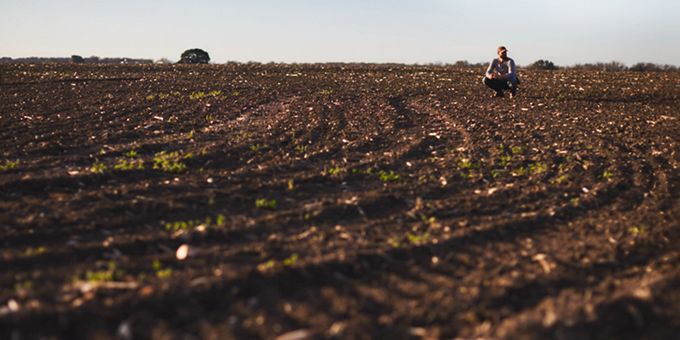Cover crops. No-till. Biological diversity. Microbial health. You’ve heard it all before. The techniques and principles of good soil health practices are well known but not widely adopted. Why?
 Black Gold is Worth the Wait: A Soil Health Mindset
Black Gold is Worth the Wait: A Soil Health Mindset

Andrew Starr FieldView™ MarComm Manager | Climate
Would you like $100 today or $1000 dollars in five years? This, and other questions like it, have been asked by behavioral economists and psychologists for years. In posing this scenario, researchers are trying to discern how people understand the value of time. It’s a choice between a smaller, immediate reward or a bigger, delayed payoff. In general, most people would choose to get $100 today.
There are many factors that could change your response, but science has repeatedly revealed that humans struggle with long-term decision-making. We prefer something reliable and tangible right now over getting an abstract reward down the road. This is rational in many ways but can hold us back. In regard to farming, soil health is a fitting example.

Better Soil: Results to Come
Cover crops. No-till. Biological diversity. Microbial health. You’ve heard it all before. The techniques and principles of good soil health practices are well known but not widely adopted. Why? Is it because farmers do not care about soil health? Of course not. Is it because farmers can’t think long-term? Not at all. The return on soil health is not something you realize immediately. It takes years, sometimes decades, of practice. The benefits of improved soil health are revealed slowly and subtly, which is a challenge for anyone. But more than that, it’s natural to wonder if good soil health is good for your bottom line.
To find the answers, we spoke with Dr. Dianna Bagnall, Research Scientist at the Soil Health Institute, who has done some of the research for you.
The Economics of Soil Health
We asked Dr. Bagnall, “What are the dollars and cents of soil health management?” “We studied 100 different farmers growing in nine states across the U.S. Corn Belt,” said Dr. Bagnall. “Working closely with these farmers, we set out to break down the average return on their investment in soil health.”
The Soil Health Spectrum
Rather than recommending a specific practice for all farmers, Dr. Bagnall likes to think of it as a spectrum. “When you consider practices that keep living roots in the ground, increase microbial activity and other factors, it’s not about arriving, it’s about making progress one step at a time,” she said.
Data Puts Practices to Work
Collecting data and soil health go hand-in-hand. When the evidence is hard to see, you need to back it up with numbers. That’s why tools like FieldView™, which measure your performance year after year, help you see the fruits of soil health management. Whatever new practice you’re adopting, you can use FieldView to mark at check strip or create a field region and see precisely how much these practices are paying off. Did it yield more? Are you using less nitrogen? Is this field tolerating drought better?

Compare Results and See for Yourself
And when you make data collection a central component of your operation, you have the luxury of looking back many seasons—all your soil tests from many different systems and platform partners. Because there’s no way around it, the payoff for soil health takes time. But if you track, measure and watch it closely, the results will be clear both on the fields and in your pocketbook.
The content & opinions in this article are the author’s and do not necessarily represent the views of AgriTechTomorrow
Comments (0)
This post does not have any comments. Be the first to leave a comment below.
Featured Product

